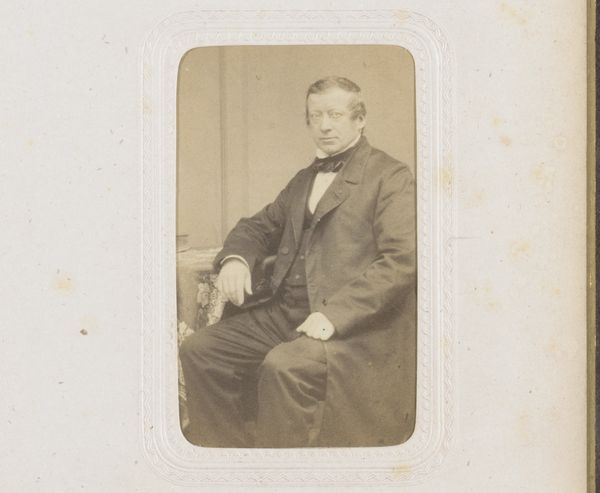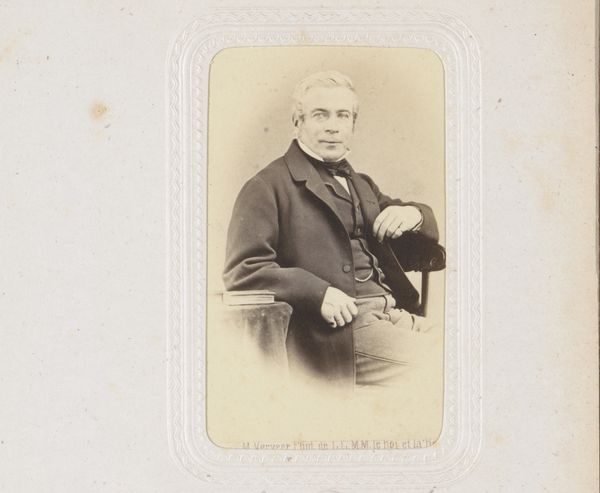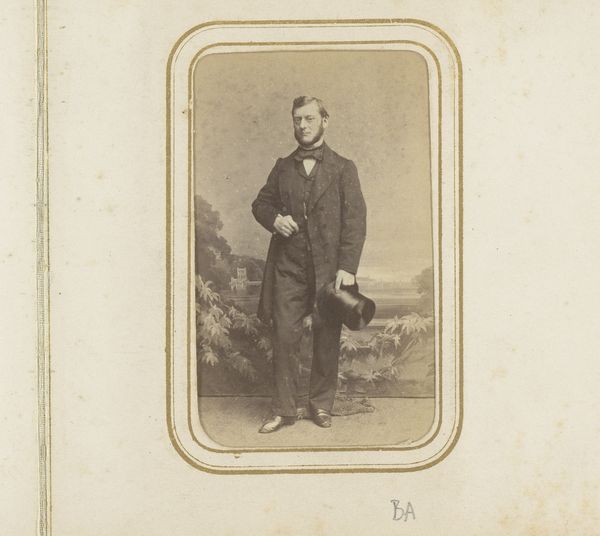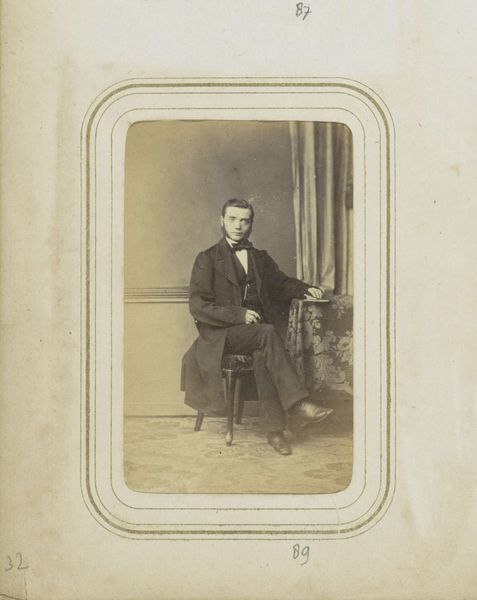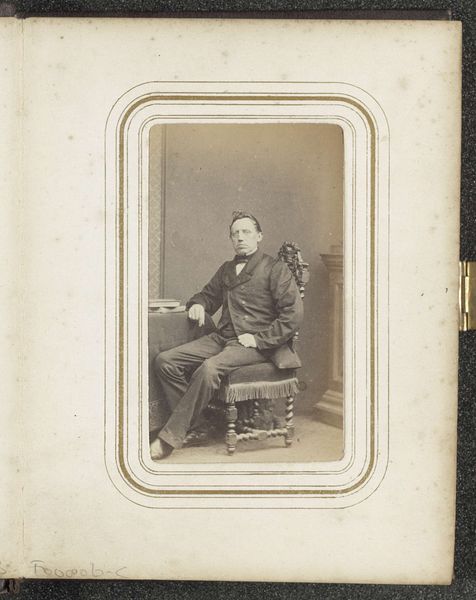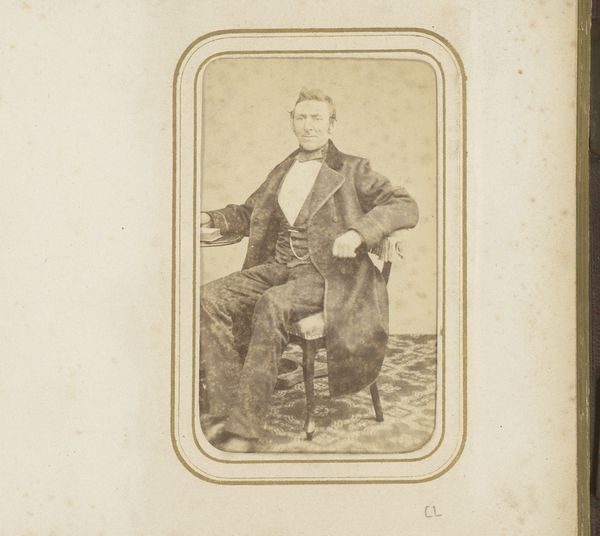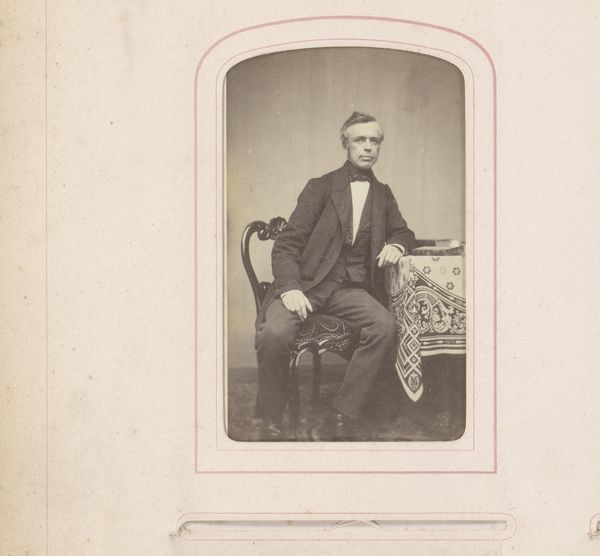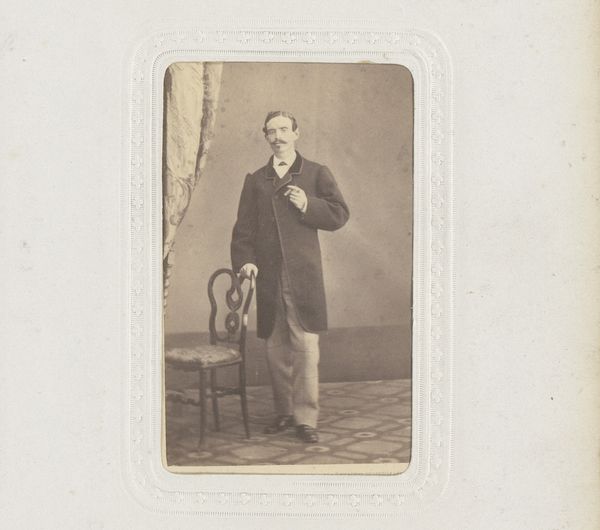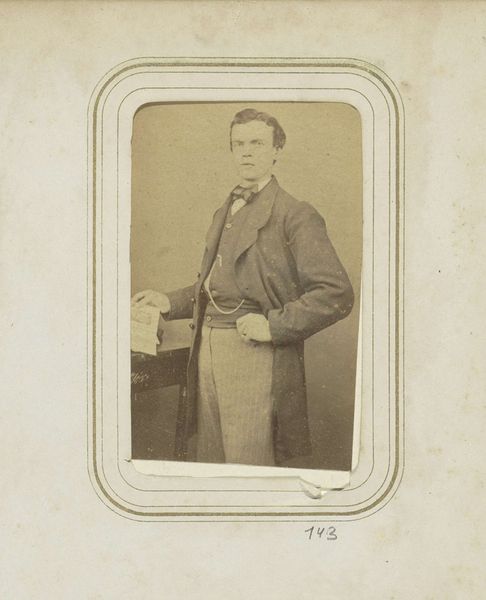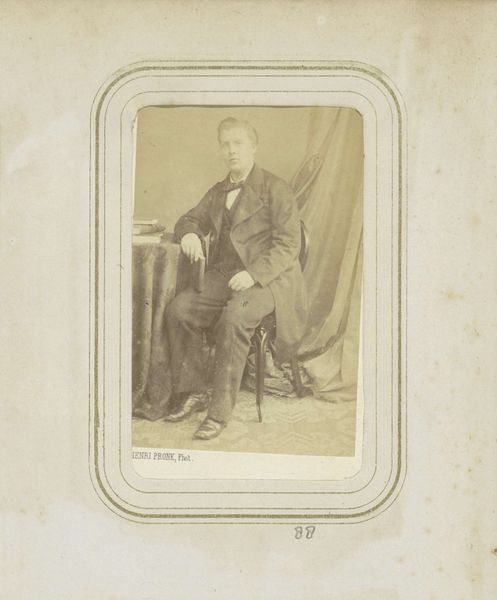
Portret van een man zittend aan een tafel, aangeduid als de aannemer Visser Nieuwpoort 1855 - 1868
0:00
0:00
mauritsverveer
Rijksmuseum
daguerreotype, photography
#
portrait
#
daguerreotype
#
photography
#
historical photography
#
19th century
#
genre-painting
#
academic-art
#
realism
Dimensions: height 82 mm, width 50 mm
Copyright: Rijks Museum: Open Domain
Editor: Here we have Maurits Verveer's "Portret van een man zittend aan een tafel, aangeduid als de aannemer Visser Nieuwpoort," a daguerreotype dating from 1855 to 1868. It strikes me as a very formal, almost stiff composition, indicative of the time, I suppose. What stands out to you about this piece? Curator: Well, let's consider the material reality. This isn't just an image; it's a daguerreotype. Silver-plated copper, meticulously prepared and exposed to light, then developed with mercury vapor. Think about the labour involved, the specific chemistry. How does that affect our reading of the subject's status as "de aannemer Visser Nieuwpoort"? Editor: So, instead of just seeing a portrait, we're looking at a representation of status achieved through… materiality itself? Curator: Exactly. The daguerreotype, while becoming more accessible, was still a significant investment. Its presence signifies a degree of wealth and a desire for lasting representation. Consider also the dark suit, indicative of serious business. It’s about more than just surface appearance; it is about the physical process of production reflecting and reinforcing social hierarchies. What can the process and cost tell us about the democratization of image-making? Editor: That’s fascinating! So it's not just about capturing a likeness, but also about displaying the subject's place within a material world. A world defined by specific resources and technological advancements, shaping how individuals are seen and see themselves. Curator: Precisely! It's a challenge to the high/low art separation. This is technical craftsmanship and social commentary, intertwined within the very process of creation. Editor: I see it differently now. I was stuck on the "portrait" aspect, but now the real interest lies in understanding how the process shapes meaning! Thank you!
Comments
No comments
Be the first to comment and join the conversation on the ultimate creative platform.
